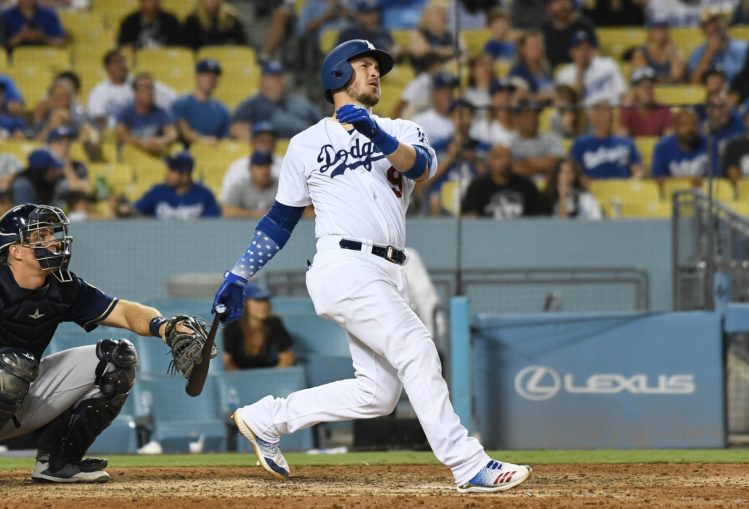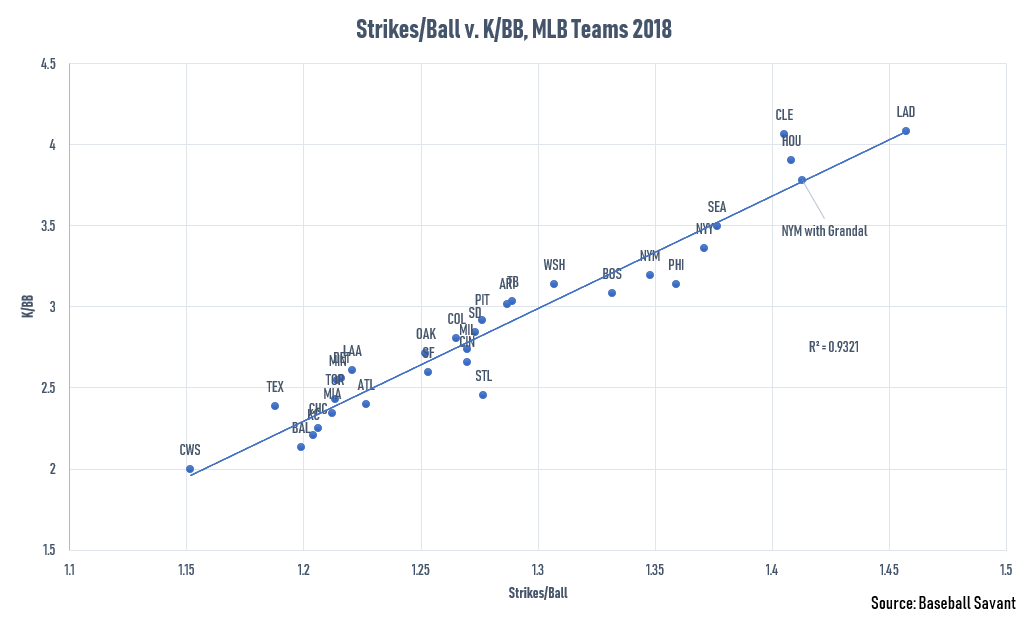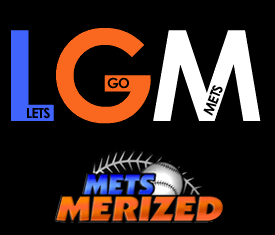
Yasmani Grandal has quietly been one of the best players in baseball in the past five seasons. That statement might seem like hyperbole—he’s an excellent hitting catcher, mind you, but not to the degree that would seem to have him transcend to the upper echelons of baseball’s elite— but I can assure you, there’s no joke or “gotcha” here. By WARP, Baseball Prospectus’ value metric, Grandal was the 20th most valuable player in baseball last season, ahead of guys like Xander Bogaerts, Aaron Judge, and Max Muncy. Grandal obviously is not a better hitter than any of those players—rather, he derives his value from his pitch framing, of which WARP is the only publicly available value metric that incorporates that aspect of catcher defense. It’s this value that means he could feasibly be one of the best targets for the Mets this offseason.
Let’s first establish the value of strikes and balls—in general, the number of strikes pitchers throw and balls they throw is strongly related to the number of strikes and walks they receive. This isn’t anything groundbreaking, it’s common sense.

But pitchers do not wholly control their balls and strikes. A not-insubstantial number of called strikes fall outside of the zone and balls fall inside the zone. There are multiple factors that affect these missed strike/ball calls by umpires, ranging from umpire incompetence to pitch movement to missed-classifications by Statcast, but the biggest factor is usually the work of catchers, who steal strike calls where they can on pitches.
Take this pitch from Adam Wainwright to Yadier Molina as a textbook example of pitch framing. Wainwright’s curveball quite clearly lands below Yasiel Puig‘s legs—but Molina subtly moves his glove upwards in catching it, fooling the umpire into calling what should be a ball into a strike.
If we assume that catchers are solely responsible for every pitch that should be a ball but is called a strike, and every pitch that is a strike but is called a ball (which is untrue, but it’s still a reasonable assumption to work with), then in 2018, our leaders in stolen strikes were the following catchers.
| Catcher ID | Stolen Strikes |
|---|---|
| J.T. Realmuto | 503 |
| Yasmani Grandal | 456 |
| James McCann | 448 |
| Wilson Contreras | 445 |
| Martin Maldonado | 438 |
| Mike Zunino | 422 |
| Yadier Molina | 420 |
| Yan Gomes | 408 |
| Jorge Alfaro | 398 |
| Chris Iannetta | 392 |
And our leaders in lost strikes (strikes called balls) were as follows:
| Catcher | Lost Strikes |
|---|---|
| Tucker Barnhart | 423 |
| Wilson Contreras | 392 |
| Robinson Chirinos | 383 |
| Yadier Molina | 363 |
| Martin Maldonado | 335 |
| James McCann | 331 |
| Salvador Perez | 331 |
| Jonathan Lucroy | 328 |
| J.T. Realmuto | 323 |
| Omar Naváez | 305 |
If we find the differential between Stolen Strikes and Lost Strikes, Grandal’s excellence becomes apparent.
| Catcher | Lost Strikes | Stolen Strikes | Differential |
|---|---|---|---|
| Jeff Mathis | 108 | 313 | 205 |
| Yasmani Grandal | 256 | 456 | 200 |
| J.T. Realmuto | 323 | 503 | 180 |
| Mike Zunino | 261 | 422 | 161 |
| Max Stassi | 138 | 290 | 152 |
| Tyler Flowers | 174 | 323 | 149 |
| Yan Gomes | 264 | 408 | 144 |
| Jorge Alfaro | 263 | 398 | 135 |
| Chris Iannetta | 258 | 392 | 134 |
| Luke Maile | 145 | 276 | 131 |
Grandal had the single best differential among full-time catchers. This isn’t some fluke—Grandal has consistently ranked in the top five catchers by framing runs above average in the past five seasons. 200 gained strikes over the course of a season might not seem like a lot, but for the Mets, it could make a substantial difference.
Grandal turned 8.2% of balls into strikes and turned 3.2% of strikes into balls in 2018. If we normalize the Mets’ strike/ball counts (turning stolen strikes back into balls and vice versa), then apply Grandal’s rates to the Mets’ strike/ball counts, we can see what kind of impact Grandal would have theoretically had on the Mets’ pitching staff in terms of strikeouts to walks by taking the regressed relationship between K/BB and Strikes/Balls. 
This is an overly optimistic projection, as the odds of Grandal catching every pitch for a team is obviously unrealistic. Still, based on Grandal’s framing abilities, we might expect the Mets pitching—starters and bullpen—to be in the upper echelons of the league with regard to pitching thanks to Grandal’s framing ability, in the same league as the Astros, the Dodgers, and the Indians. That’s an enormous step forward for the pitching staff as a whole! The Mets’ 2018 starters were stellar, make no mistake, but the bullpen was eye-gouging awful, and having a player so adept at framing as Grandal could help the team take a significant step forward.
Of course, we should operate with a grain of salt with all this—Jonathan Lucroy, who had been widely acclaimed as one of the best pitch framers in the majors, had his pitch-framing ability vanish suddenly overnight. Research has shown that there isn’t really a significant aging curve for catchers, but if we assume a worst case scenario and think that it’s possible that Grandal could lose his pitch framing ability overnight (something that is, I will stress again, extremely unlikely!), then Grandal would still represent a significant improvement over the Mets’ current catching corp of Kevin Plawecki and Tomas Nido.
Nido has received raves for his framing in the minors, but his bat has never quite reached the level necessary to justify starting him full time, and Kevin Plawecki has graded out as a below-average framer and slightly above average bat. Grandal, while spending the past five years as arguably the best framer in the majors, has also demonstrated the third-best bat of any catcher since 2013 by wRC+, just behind Buster Posey and Gary Sanchez. Even if Grandal’s elite framing fell off a cliff, his bat would compensate in terms of value and present him as a better option than either Plawecki or Nido.
Grandal is a career .240/.341/.441 hitter with a healthy history for a catcher (5 straight seasons of 400+ PA), stellar pitch framing, and he’s a right-handed bat who can hit up in the order, something of which the Mets are in desperate need. Grandal is only entering his age 30 season, so there’s little reason to think that Grandal would dramatically decline in subsequent seasons. Grandal would represent a substantial upgrade to the Mets in terms of both their offense and their pitching staff—in terms of obtaining the most bang for their buck, Grandal is the Mets’ best bet.















